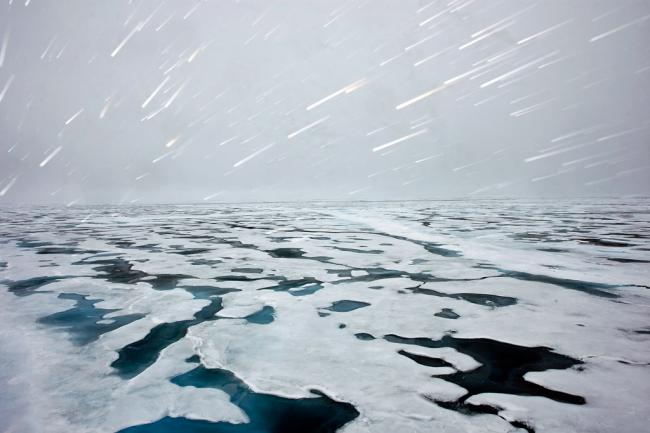
Weather, climate and water challenges in spotlight at annual session of UN weather agency council
The Sixty Ninth Session of the World Meteorological Organization (WMO) Executive Council, which runs in the Swiss city through 17 May, will also provide an opportunity to help shape the agency's contribution to the global agenda on disaster risk reduction, sustainable development and climate change.
Highlighting efforts to strengthen partnerships within the UN system, WMO Secretary-General Petteri Taalas said the agency seeks to meet the needs of development and humanitarian agencies for more information on El Niño and La Niña events and seasonal predictions, as well as warnings of extreme weather through a potential global alarm system.
Such an alarm system – if implemented at a global level – could serve as an aggregator and repository of authoritative weather warnings and related alerts worldwide.
Taalas went on to say that WMO will seek to increase the profile of its expertise on water and ocean affairs, and bolster research, while continuing to provide scientific advice on the state of the climate.
“We have seen a number of records broken in terms of temperatures and low Arctic and Antarctic sea ice. Sea level rise is accelerating,” he said, also warning on the concentration of CO2 in the atmosphere, and stressing that the benchmark Global Atmosphere Watch observing station at Mauna Loa, Hawaii, recently reached more than 410 parts per million.
CO2 levels had previously reached the 400 parts per million barrier for certain months of 2016 and in certain locations but never before on a global average basis for the entire year, trapping heat and causing the earth to warm further. Carbon dioxide is the single most important greenhouse gas emitted by human activities.
Extreme weather events
Extreme weather events are on the increase, Taalas stressed. Indeed, on the eve of the Executive Council session, Tropical Cyclone Donna reached the equivalent of Category Five status in the South Pacific – the strongest late-forming cyclone on record in the region.
“Besides temperatures, we also need to focus on rainfall issues,” he continued, noting the severe drought in parts of Africa and Mongolia, as well as flooding in Colombia and Peru and, most recently, in Canada.
Year of Polar Prediction
One of the highlights of the meeting will be the launch of the Year of Polar Prediction – acoordinated international drive to improve predictions of weather, climate and ice conditions in the Arctic and Antarctic.
The remoteness and prevalence of harsh weather and climate conditions contribute to making the Polar Regions the poorest observed in the world while, according to the WMO, there is a high level of public interest – especially among youth – about how rapid climate changes at high latitudes affect the weather and climate in the rest of the world. The expansion of human activities into the Polar Regions is also increasing the demand for more information and better predictions.
The Year of Polar Prediction is part of the 10 year international Polar Prediction Project and aims to minimize the environmental risks associated with rapid climate change in Polar Regions and to close the current gaps in polar forecasting capacity.
UN Photo/Mark Garten (file)
Source: www.justearthnews.com
Support Our Journalism
We cannot do without you.. your contribution supports unbiased journalism
IBNS is not driven by any ism- not wokeism, not racism, not skewed secularism, not hyper right-wing or left liberal ideals, nor by any hardline religious beliefs or hyper nationalism. We want to serve you good old objective news, as they are. We do not judge or preach. We let people decide for themselves. We only try to present factual and well-sourced news.







